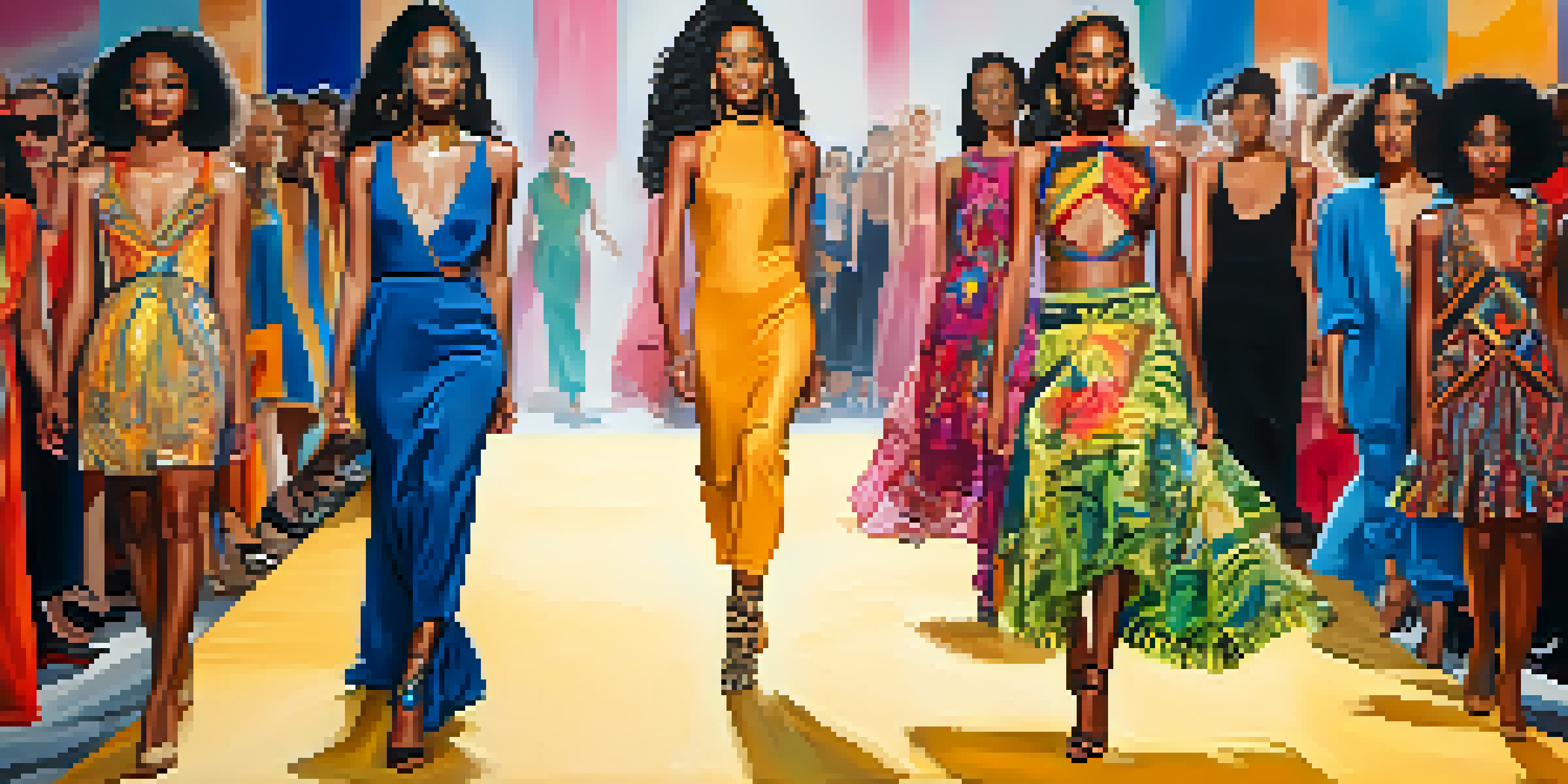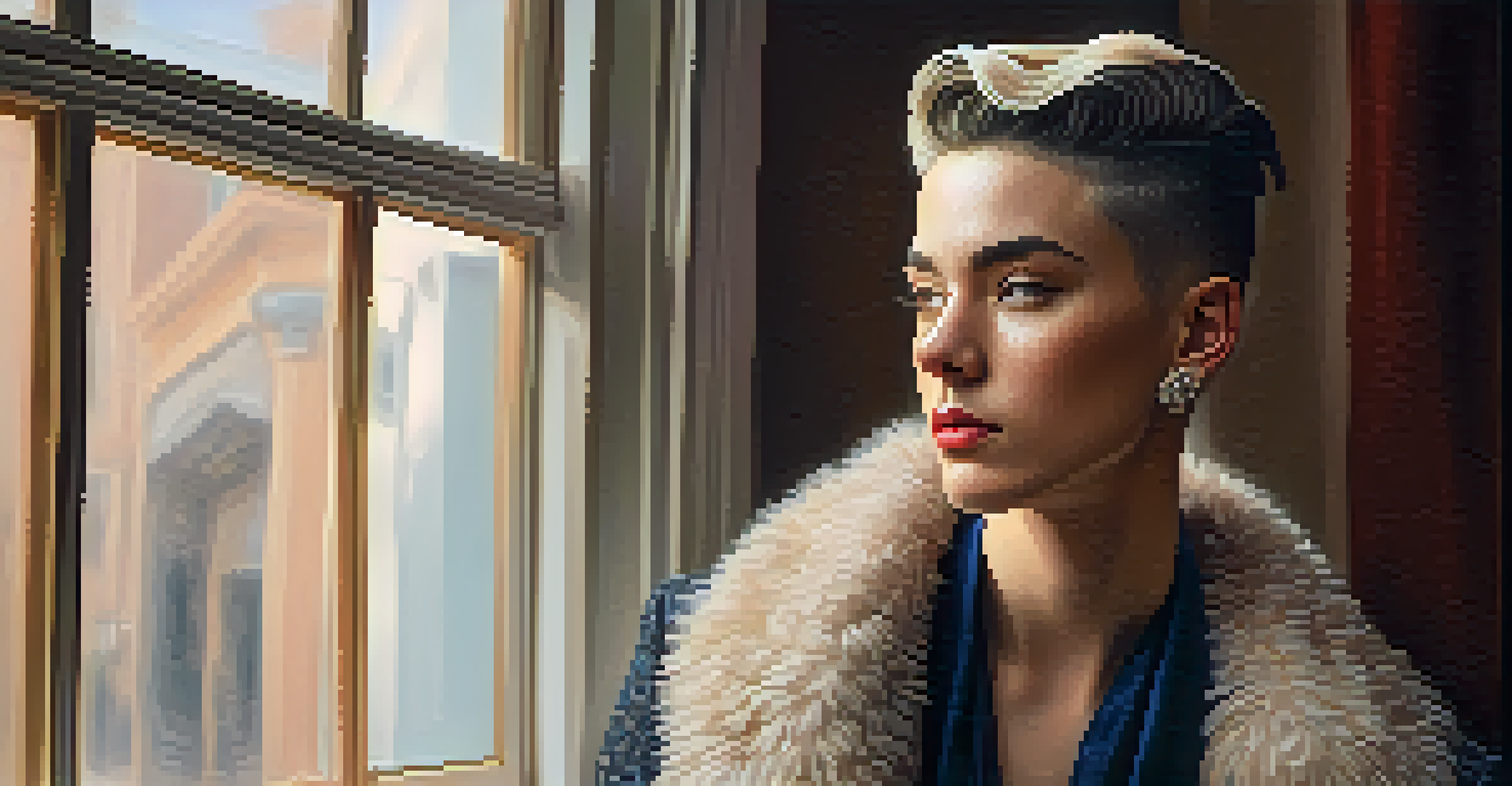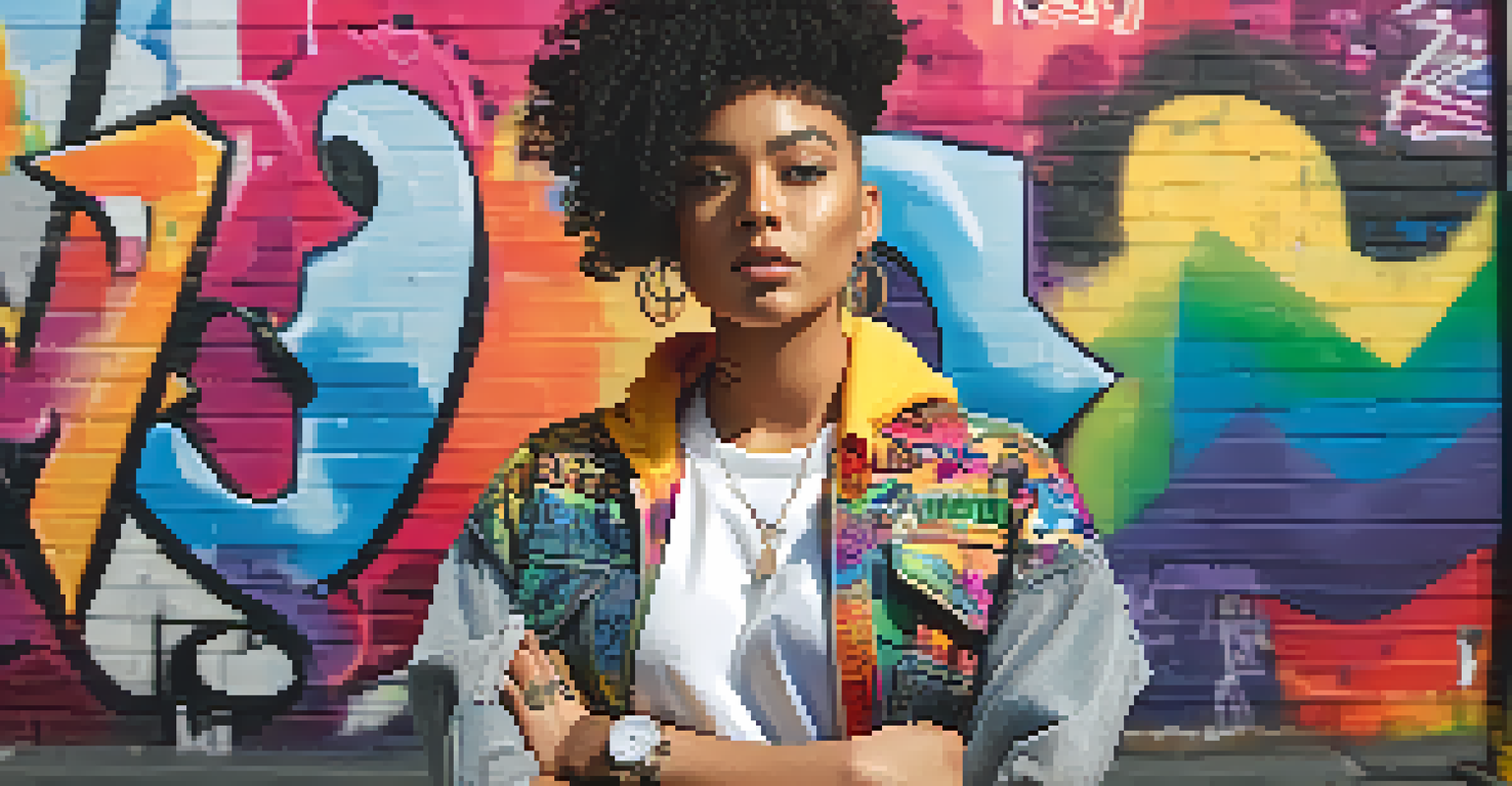LGBTQ+ Representation in Fashion Advertising: Progress and Gaps

The Evolution of LGBTQ+ Representation in Fashion
Fashion advertising has undergone significant changes over the years, especially in its representation of the LGBTQ+ community. In the past, brands often ignored or misrepresented this vibrant group, relying on stereotypes that didn't resonate with the reality of LGBTQ+ lives. However, recent years have seen a budding awareness, with many fashion labels actively promoting inclusivity and diversity in their campaigns. This shift reflects broader societal changes and a growing recognition of the importance of authentic representation.
Fashion is not about the clothes you wear, but how you express yourself through them.
Many iconic campaigns have emerged that celebrate LGBTQ+ identities, showcasing real stories and experiences. For instance, brands like Calvin Klein and Gucci have featured LGBTQ+ individuals in their advertisements, breaking away from traditional norms. This not only empowers the community but also resonates with a broader audience that values authenticity and representation. It's a win-win, as consumers today are looking for brands that genuinely reflect their values.
However, while progress is evident, it's essential to acknowledge that the journey is far from over. Many brands still fall into the trap of tokenism, where they feature LGBTQ+ individuals without truly understanding or supporting the community. The challenge remains to ensure that representation goes beyond mere visuals and translates into genuine advocacy and support for LGBTQ+ rights.
Impact of Social Media on Fashion Advertising
Social media has become a powerful tool in shaping fashion advertising, particularly for LGBTQ+ representation. Platforms like Instagram and TikTok allow brands to reach audiences directly and showcase diverse voices that resonate with their followers. This democratization of content creation gives LGBTQ+ individuals a chance to share their stories and challenge traditional beauty standards. As a result, fashion brands are increasingly collaborating with LGBTQ+ influencers to create authentic, relatable campaigns.

These collaborations often lead to a more nuanced portrayal of the LGBTQ+ experience, moving beyond the stereotypical images of the past. For instance, campaigns featuring transgender models or non-binary individuals help to normalize diverse identities in the fashion world. This visibility is crucial for young LGBTQ+ individuals who are seeking role models and representation in the media. Social media serves as a platform for these discussions, urging brands to be more inclusive.
Shift Towards Authentic Representation
Fashion brands are increasingly embracing LGBTQ+ identities in their advertising, moving away from stereotypes to promote genuine inclusivity.
Yet, the challenge remains that not all brands engage meaningfully with their LGBTQ+ audience. Some may exploit LGBTQ+ trends for profit, without a genuine commitment to the community. It's crucial for consumers to support brands that not only represent LGBTQ+ individuals but also advocate for their rights and causes.
Diversity within the LGBTQ+ Community
While there has been progress in LGBTQ+ representation, it's important to recognize that the community is not monolithic. The spectrum of identities, including race, ethnicity, and gender expression, must be reflected in fashion advertising. Unfortunately, many campaigns still prioritize a narrow definition of LGBTQ+ identity, often sidelining people of color and those from different cultural backgrounds. This lack of intersectionality can perpetuate harmful stereotypes and exclude vital narratives.
In a world where you can be anything, be kind and inclusive.
For example, when a fashion brand features only white, cisgender individuals in their LGBTQ+ campaigns, it misses an opportunity to represent the rich diversity within the community. Brands that embrace intersectionality not only connect with a wider audience but also promote a more inclusive narrative. By showcasing models from various backgrounds, they can tell stories that resonate with different experiences and perspectives.
Incorporating diverse voices in advertising is not just about checking a box; it enriches the narrative. Consumers increasingly demand authenticity and representation, and brands that embrace this diversity can cultivate loyalty and trust. The challenge lies in consistently applying this approach across all marketing efforts, ensuring that every identity is valued and celebrated.
The Role of Activism in Fashion Advertising
Activism plays a pivotal role in shaping how fashion brands approach LGBTQ+ representation. Many designers and brands are leveraging their platforms to advocate for LGBTQ+ rights and visibility. This isn't just about creating campaigns; it's about aligning with movements that seek equality and justice for all individuals, regardless of their sexual orientation or gender identity. By doing so, these brands can create a deeper connection with their audience, who often value corporate social responsibility.
For instance, brands that donate a portion of their sales to LGBTQ+ organizations or participate in pride events demonstrate their commitment beyond just marketing. This activism resonates with consumers, especially younger generations who prioritize values over products. It transforms fashion advertising into a powerful vehicle for social change, making a statement that goes beyond aesthetics.
Social Media's Role in Visibility
Platforms like Instagram and TikTok empower LGBTQ+ voices, enabling brands to create more authentic and relatable fashion campaigns.
However, brands must ensure that their activism is authentic and not merely a marketing tactic. Consumers are quick to call out 'rainbow-washing'—a term used to describe brands that superficially support LGBTQ+ causes during Pride Month without ongoing commitment. Authentic activism requires a continuous dialogue with the community and a willingness to tackle issues head-on.
Consumer Expectations and Brand Accountability
Today's consumers are more informed and engaged, leading to heightened expectations for brand accountability. They want to see brands that not only represent LGBTQ+ individuals in their advertisements but also support LGBTQ+ rights in a meaningful way. This shift has forced many fashion companies to reassess their values and practices, ensuring they align with the expectations of their diverse audiences. Transparency is key, as consumers are increasingly interested in a brand's stance on social issues.
For example, brands that openly communicate their support for LGBTQ+ rights—whether through partnerships, donations, or advocacy—tend to earn greater loyalty from their customer base. This is especially true for younger consumers, who are not afraid to voice their opinions and challenge brands that fall short. As a result, companies are finding that genuine representation and activism are not just beneficial for their image but essential for their survival in a competitive market.
However, it's important for brands to understand that accountability goes beyond marketing campaigns. They must commit to fostering inclusive work environments and supporting LGBTQ+ employees. When brands prioritize internal inclusivity, they not only enhance their external messaging but also create a culture of respect and acceptance.
Challenges and Barriers to Representation
Despite significant strides in LGBTQ+ representation in fashion advertising, challenges and barriers persist. One major issue is the prevalence of stereotypes that can undermine the authenticity of campaigns. These stereotypes often arise from a lack of understanding or engagement with the LGBTQ+ community, leading to portrayals that do not accurately reflect real lives. As a result, brands may find themselves alienating audiences rather than connecting with them.
Moreover, the fashion industry has a long history of exclusivity, which can hinder genuine representation. Many brands still favor traditional beauty standards, often sidelining LGBTQ+ individuals who do not conform to these norms. This narrow focus can limit the scope of representation, failing to showcase the full spectrum of LGBTQ+ identities and experiences.
Accountability in Brand Practices
Consumers expect brands to not only represent LGBTQ+ individuals in their marketing but also actively support their rights and foster inclusive environments.
Addressing these challenges requires collaboration and open dialogue with the LGBTQ+ community. Brands must actively seek feedback and engage with diverse voices to create campaigns that resonate authentically. By fostering a culture of inclusivity and understanding, the fashion industry can overcome these barriers and create a more representative future.
Looking Ahead: The Future of LGBTQ+ Representation
As we look to the future, the potential for LGBTQ+ representation in fashion advertising is promising yet requires continuous effort. Emerging designers and brands are already pushing boundaries, challenging conventional norms, and embracing a more inclusive narrative. This evolution suggests that the fashion industry is gradually becoming a platform for diverse voices, which is essential for fostering acceptance and understanding in society.
However, progress must be accompanied by accountability and authenticity. Brands that fail to engage genuinely with the LGBTQ+ community risk backlash, while those that prioritize true representation will likely thrive. The key will be maintaining momentum—ensuring that the conversation around LGBTQ+ rights and representation doesn't fade away after Pride Month or major campaigns.

Ultimately, the future of LGBTQ+ representation in fashion advertising hinges on a collective effort. Consumers, brands, and advocates must work together to challenge stereotypes, elevate diverse voices, and ensure that every individual feels seen and valued. As we embrace this journey, we can look forward to a fashion landscape that truly reflects the richness of human experience.